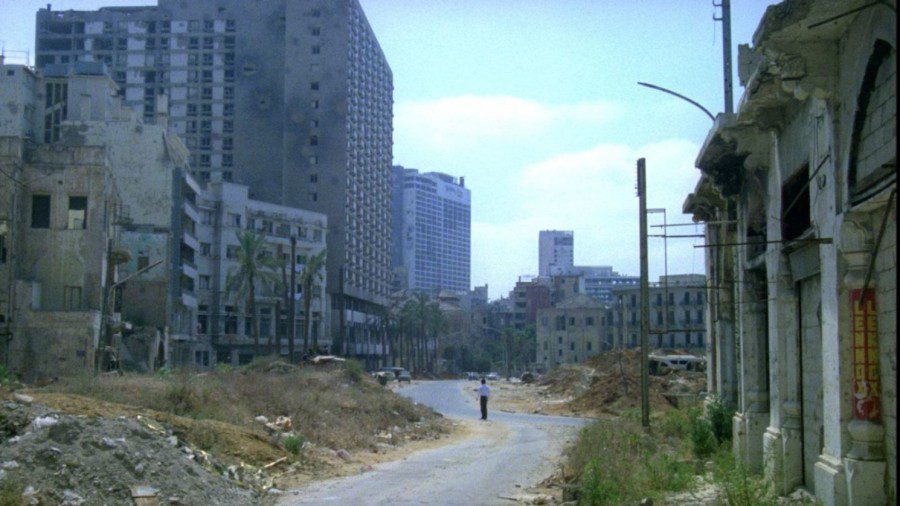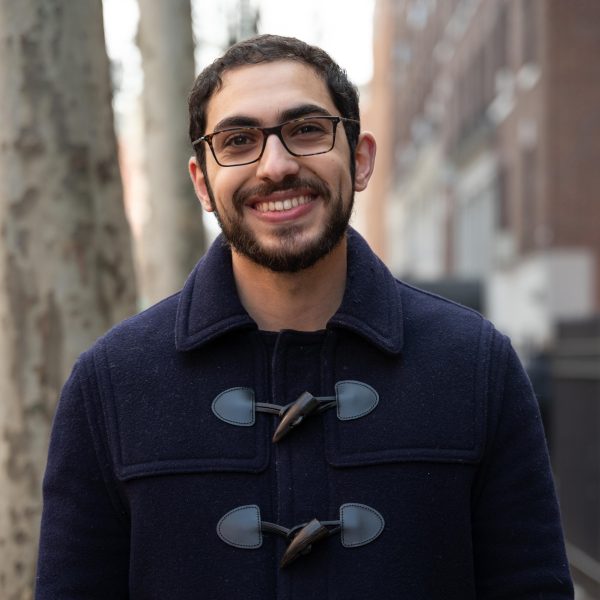NYFF 60 Review: ‘Beirut the Encounter’ is pure cinematic poetry
Lebanese director Borhane Alaouié questions the human condition through his powerful visual language and his instilling of a lingering sense of melancholy. “Beirut the Encounter” will screen at the 60th New York Film Festival on Oct. 16 at Lincoln Center.
In the newly restored “The Beirut Encounter,” Borhane Alaouié displays masterful and heartbreaking visual storytelling. (Courtesy of Nadi Lekol Nas)
October 14, 2022
A beautiful 2K digital restoration of late Lebanese filmmaker Borhane Alaouié’s 1981 film “Beirut the Encounter” was screened in Film at Lincoln Center as a part of the 60th New York Film Festival’s revivals section. The film, which will be holding an encore on Oct. 16, is set in 1977, during the Lebanese Civil War. It begins when the lines of communication between East and West Beirut are reestablished, allowing two former university friends, Haydar (Haithem al Amine) and Zeina (Nadine Acoury), to reconnect after years of separation.
Alaouié’s cinematic style is one of patience, particularly in his precise camerawork. In his debut feature “Kafr Kassem,” the director depicted the 1956 Kafr Kassem massacre in Palestine through slow, methodical yet unrelenting realism. In “Beirut the Encounter,” the elegance of the cinematography matches the serenity of the narrative. The viewer is entranced as the camera steadily documents the reality of checkpoints, ruins and intense traffic in a war-ridden Lebanon. With fluid movements and purposeful composition, Alaouié crafted a film that is both authentic to 1977 Beirut while also hypnotic in its atmosphere and execution.
Haydar, a Shiite man, and Zeina, a Christian woman, have an intimate relationship with one another from their first phone call. A former teacher and immigrant from Southern Lebanon, Haydar recently moved to a small apartment in Beirut with his brother, sister-in-law and infant nephew after they fled their village. Haydar’s soft-spoken personality allows emotions to be communicated through Alaouié’s visual artistry, rather than through blatant dialogue. However, whenever Haydar does express himself, it feels genuine.
Zeina, a former student, lives with her grandmother, mother and brother in a modest home on the other side of Beirut. She doesn’t hold back when she has something to say — which is partly why she was kicked out of school — but restrains herself when it comes to her feelings toward Haydar. Despite not seeing each other for years, Haydar and Zeina show a sense of friendliness and warmth to each other. Ironically, the only times the two characters ever communicate are over the phone. We never once see the two protagonists physically share a scene, and still, their connection is indescribably strong.
Though it is clear they have known each other since college, Alaouié leaves the nature of their relationship relatively ambiguous. It isn’t until they reconnect over the phone that Haydar finds out Zeina is leaving for the United States the next day. During the span of 24 hours, the two characters desperately try to meet, but to no avail. Held up by traffic and a comically long-winded, philosophical conversation with the taxi driver, Haydar fails to catch Zeina, who was waiting in a café. With every unsuccessful attempt by the characters to reach one another, the audience gradually develops the urge to see them succeed, despite not knowing much about them or their relationship. However, by the time they come so close, it is too late.
One of the most striking elements of the film is the sequence in which Zeina and Haydar each record themselves in isolation, pretending to be talking to the other, expressing thoughts aloud, and reminiscing about the past. Back-and-forth cuts between the two create what is evidently a superficial conversation that strikes the heart in a powerful way. They individually discuss the day they met, what they like most about each other, and what’s generally going on in their lives, among other things. This simple sequence is executed in a beautiful, haunting way, and gives us crucial insight into the two characters and how much they mean to each other.
The two plan to exchange their recorded tapes the following day at the airport, right before Zeina leaves for the United States. Haydar gets there early — perhaps too early — and Zeina, ironically, is stuck in traffic. He uses his time alone in the airport to meditate on his recordings — and his feelings. Then, for no explicit reason, Haydar decides to leave the airport before Zeina arrives, subsequently destroying his tape recording. Zeina arrives at the airport, only to find nothing but crowds of people walking in and out minding their own business. In a sea of vulnerability, she breaks down in tears.
The film’s abrupt ending raises questions. Why did Haidar leave? Why did he destroy the tapes? Perhaps he left for the same reason Zeina left the café. But why did she leave then? Rather than answering these questions, Alaouié leaves it up to the audience to interpret the characters’ motivations and psyches through his soul-stirring visual poetry.
“Beirut the Encounter” is an unconventional yet immensely powerful love story devoid of physical intimacy. Alaouié’s cinematic language is one of striking poeticism. He questions the value of relationships and connections in ways that are universal, but personal, through a series of profound analyses, astonishing authenticity and unequivocal technical achievements. Alaouié deconstructs the human experience in cinema’s purest, most empathetic form, and it is nothing short of essential and poetic.
Contact Yezen Saadah at [email protected].

























































































































































